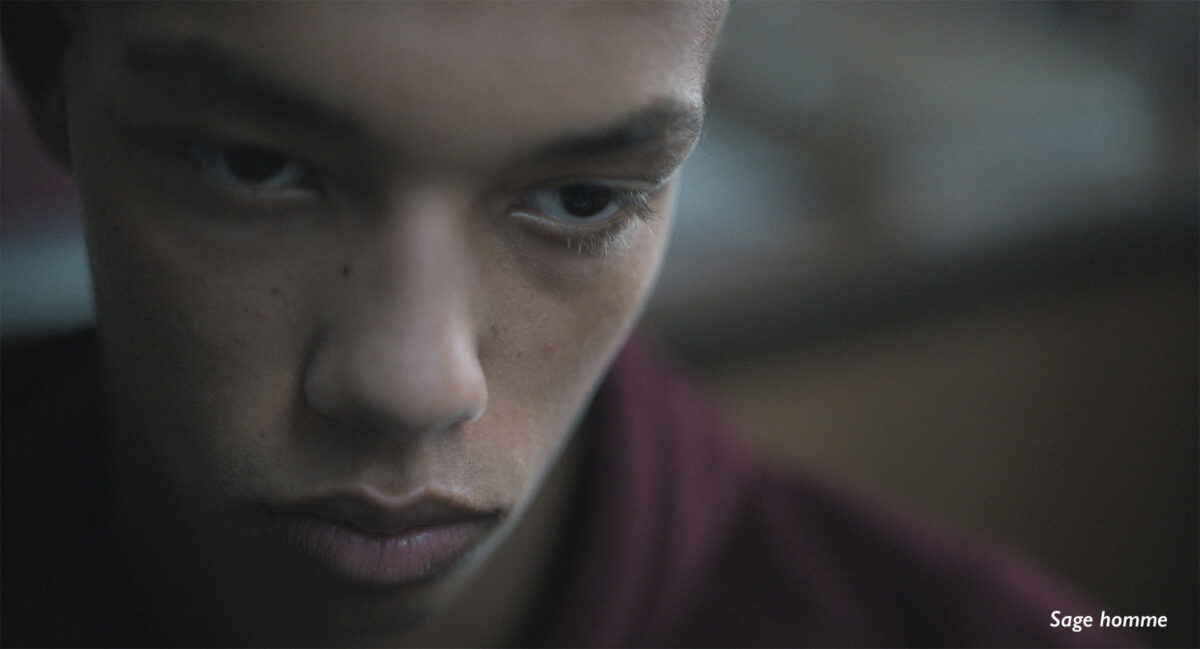Jean-François Hensgens lenses Sage Homme

After failing the entrance exam for medical school, Léopold (Melvin Boomer) defaults to joining the midwifery school while hiding the truth from his family, especially his father played by Steve Tientcheu. Although he enters this exclusively female environment without conviction, his encounter with Nathalie (Karin Viard), an experienced and passionate midwife, changes his perspective on this fascinating world and challenges his certainties.
Sage Homme is a film by Jennifer Devoldere shot by Jean-François Hensgens.

JFH: I met Jennifer in the spring of 2021. After putting her career as a feature film director on hold for ten years, she was planning to shoot her third feature film in the fall. In this film, she talks about missed opportunities, lost ambition, motherhood, and fatherhood, as well as professional and personal commitment. This story provides a beautiful blend of emotion and humor that constantly intertwines with life.
Right from the start, Jennifer and I agreed on visual references from various fields, such as English or US comedies like Fargo, Billy Elliot, or dramatic comedies like Manchester by the Sea, Three Billboards, Judas and the Black Messiah, and the photographer Julien Magre, but above all, the series Normal People.
She wanted a polished but not aestheticized image to remain in a realistic perception of the story. I quickly made comparative tests between an Alexa Mini LF, a Sony Venice, and a Red Monstro. On the optical side, a Zeiss Supreme Radiance series, a Black Wings Transciant series, and a Cooke S7 series were tested to find the most suitable combination for the look we wanted to give to the film.


After these tests, following a blind screening, Jennifer and I decided to use the Alexa Mini LF, as its rendering seemed the closest to what we were looking for in terms of contrast and colorimetry. Optically, we immediately chose the Zeiss Supreme Radiance series, which brought softness and sharpness at the same time, with the added flare of the Radiances that we liked very much and avoided a too smooth appearance.
Later on, we exchanged ideas on how to shoot Sage Homme. Our method choices were adapted to each sequence, alternating according to the mood of Léopold, the main character, in order to highlight his current fragility, sadness, or other emotions. We wanted a mix of handheld camera but with sobriety, dolly shots, a Ronin, or a geared head.
The same was true for the use of the large sensor of the mini LF. I pushed it to its limits with an open diaphragm when we wanted to highlight the character’s solitude. Conversely, I gave more depth in the scenes where he begins to integrate into the group.


The challenge for me was to make the visual of a hospital cinematic while constantly flirting with the limits of realism. Jennifer really encouraged me in this direction, and I am very happy with this collaboration. Obviously, this could only be done with the help of the production designer Jean-Marc Tran Tan Ba, who was able to put his talent and ingenuity at the service of the film. He reconstructed the hospital and maternity ward in a disused level of a higher education school in Nancy, which gave us a lot of leeway for filming.
I must also highlight the incredible work of the Ciné Bébé team, in charge of hip prostheses and fake babies, which allowed us to shoot the childbirth scenes. The final result is really impressive in terms of realism and authenticity, even though no image is taken from a real situation or VFX.
Directed by Jennifer Devoldere
Screenplay by Jennifer Devoldere and Cécile Sellam
Director of photography: Jean-Francois Hensgens AFC/SBC
Production designer: Jean-Marc Tran Tan Ba
Costume designer: Emmanuelle Youchnovski
Editing: Virginie Bruant
Sound: Ivan Dumas
text by Jean-François Hensgens for the AFC.
